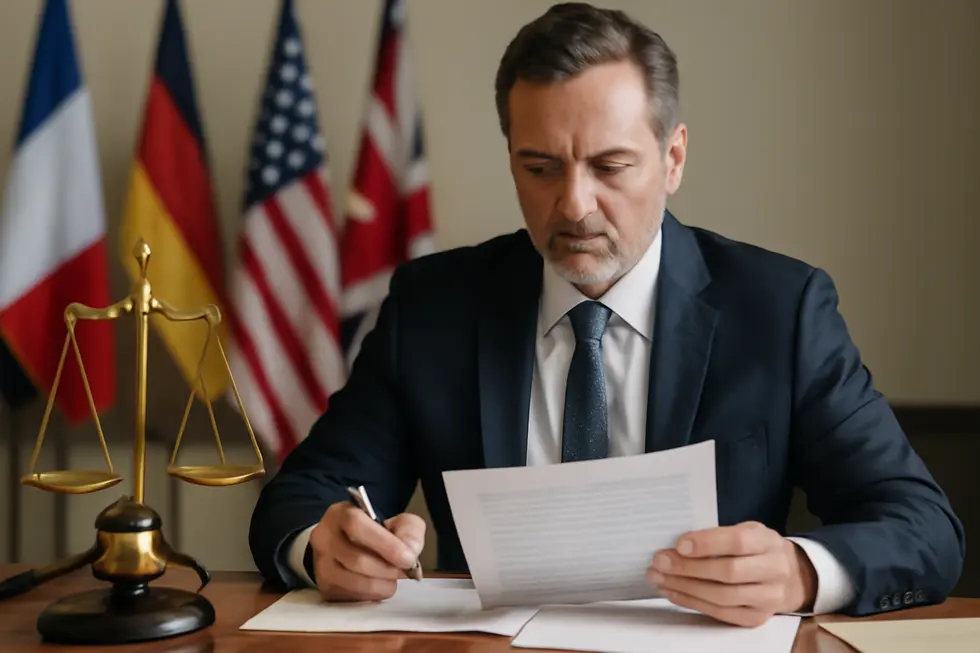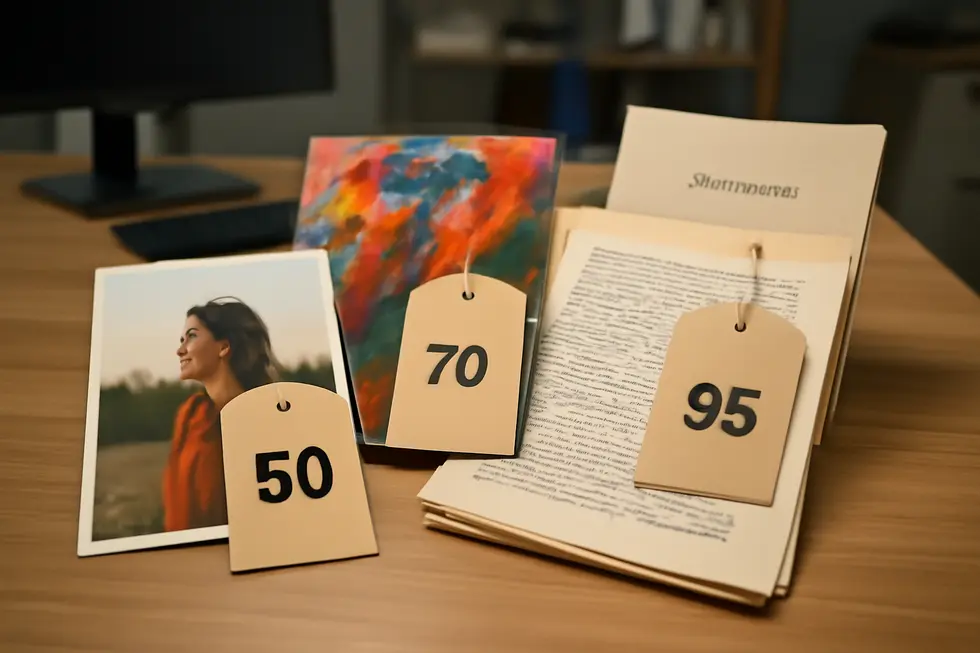Introduction
Copyright protection plays a pivotal role in securing your creative assets and intellectual property. For business owners, understanding how long this protection lasts—the “life of copyright”—is essential for strategic planning, risk management, and capitalizing on creative works. This duration is shaped by complex legal frameworks that vary across countries, and it depends on the nature and type of the protected work. Grasping these nuances can help businesses avoid costly infringements and leverage opportunities as rights expire. This article explores three key aspects: the legal frameworks defining copyright duration, how copyright terms differ across various work types, and the business consequences when copyrights expire. Together, these insights will arm you with a clearer understanding of how to manage intellectual property effectively within your business.
Tables of Contents
Chapter 1: Legal Frameworks Defining the Life of Copyright
- How Digital Innovation Reshapes Copyright’s Duration and Scope
- Economic Forces Shaping the Duration and Terms of Copyright Protection
- Geopolitical Forces Shaping Copyright Duration and Regulation
- Balancing Creative Rights and Public Access: Societal Dimensions of Copyright Duration
Chapter 2: Variations in the Life of Copyright Across Different Work Types
- How Technology Shapes Copyright Duration and Protection Across Creative Works
- Economic Dynamics Shaping Copyright Duration Across Creative Mediums
- How Geopolitical Dynamics Shape Copyright Duration Across Work Categories
- Navigating Social and Cultural Influences on Copyright Duration by Work Type
Chapter 3: Consequences and Significance of the Life of Copyright Expiration
- Unlocking Innovation: How Public Domain Spurs Technological Progress Beyond Copyright Limits
- Economic Dynamics of Copyright Expiration: Navigating the Shift from Creator Incentives to Public Prosperity
- Geopolitical Variations in Copyright Duration and Their Influence on Global Cultural Exchange
- Unlocking Cultural Heritage: How Copyright Expiration Enriches Public Access and Creativity
Chapter 1: Legal Frameworks Defining the Life of Copyright

1. How Digital Innovation Reshapes Copyright’s Duration and Scope
Technological innovation has dramatically reshaped the legal frameworks that dictate the life of copyright, compelling lawmakers and courts to revisit foundational concepts. Digital technology expanded the range of copyrightable subjects, incorporating software and complex databases under copyright protection. These adjustments reflect global treaty efforts like TRIPS and the WIPO Copyright Treaty, which enforce international standards while introducing specific provisions to address digital content’s unique characteristics. However, enforcement faces unprecedented challenges as digital files can be copied and distributed globally with unparalleled ease, straining traditional legal infrastructures.
The rise of artificial intelligence (AI) adds deeper complexity. AI-generated creations challenge classic ideas of authorship and ownership, since these works often lack a human creator in the conventional sense. The U.S. Copyright Office’s stance—that AI cannot be an author—leaves unresolved ownership questions and sparks debate on how far existing laws can adapt. Cases such as Bartz v. Anthropic underscore the urgency: courts are now addressing whether unauthorized use of copyrighted materials to train AI models constitutes infringement, highlighting the delicate balance between protecting creators and fostering innovation.
Emerging solutions like blockchain-based copyright management and AI-driven rights enforcement promise to strengthen protection and streamline ownership verification in the digital age. These technologies extend copyright’s reach but also drive continuous legal evolution, adapting duration, scope, and enforcement methods to modern realities. Understanding these advancements is essential to grasp the dynamic life of copyright as it navigates the intersection of law and technology.
For a foundational understanding of copyright concepts and how they apply in the digital realm, explore more at copyright information for books.
2. Economic Forces Shaping the Duration and Terms of Copyright Protection
Copyright law fundamentally balances economic incentives for creators with broader public access to creative works. By granting exclusive rights generally lasting the life of the author plus 70 years in many regions, such as the United States and Canada, the law enables creators and their heirs to recoup investments and profit from their intellectual efforts. This exclusivity addresses the unique economic challenge of protecting nonrivalrous and easily replicable goods, whose unrestricted use could diminish creators’ motivation to innovate and invest.
The economic rationale draws heavily from utilitarian principles, positing that rewarding creators with timed exclusivity spurs cultural enrichment and innovation. Yet, extending copyright also delays works’ transition into the public domain, where unrestricted access fosters new creativity and knowledge dissemination. This tension underpins ongoing legal reforms; for example, Canada’s recent extension to life plus 70 years pushes public domain access further into the future, illustrating choices policymakers make about how long to prioritize creator incentives.
Emerging markets illustrate additional economic complexities. Recent multimillion-dollar settlements in AI-related copyright cases reflect the evolving value of intellectual property amid technological advancement. These settlements define new parameters for licensing and damages in contexts where copyrighted works feed machine learning systems, signaling how economic considerations prompt adaptations in legal frameworks.
Thus, the duration and terms of copyright protection arise from intricate negotiations between stimulating creative output, ensuring fair compensation, and gradually enriching public cultural assets. This economic interplay continually shapes copyright’s legal boundaries, balancing private rights against communal benefit. For deeper insight on these themes, consult economic and ethical considerations in intellectual property law.
3. Geopolitical Forces Shaping Copyright Duration and Regulation
Geopolitical Forces Shaping Copyright Duration and Regulation
The duration and enforcement of copyright protections are increasingly molded by geopolitical tensions and technological ambitions. This dynamic is exemplified by the ongoing regulatory contest between the United States and China over artificial intelligence (AI) and copyright-protected data. The U.S. government promotes flexible copyright interpretations, especially through the doctrine of Fair Use, to grant AI developers broader access to copyrighted material for training and innovation. This approach seeks to preserve American technological leadership amid a global race for AI dominance.
Conversely, China’s regulatory environment often imposes different restrictions, influencing global rule-setting in intellectual property (IP). These competing legal philosophies reflect deeper strategic interests that shape IP laws worldwide. Countries maneuver their copyright terms and enforcement policies not only according to internal priorities but also in reaction to global economic rivalries and alliances.
Beyond AI, geopolitical considerations guide how nations harmonize their IP laws with international treaties while maintaining strategic advantages. For instance, smaller economies may strengthen IP protections to attract foreign investment, while major powers use legislative frameworks as tools in broader economic and political contests. Even digital platform governance and misinformation control, which intersect with intellectual property concerns, are deeply affected by international cooperation complexities fueled by geopolitical friction.
Thus, the life of copyright is not purely a legal or cultural issue; it is entwined with shifting power balances and technological leadership battles. This interplay shapes whether copyright laws favor adaptability or stringent protection, ultimately determining how long and under what conditions creators can control their works before they enter the public domain. Discover more on copyright and public access at copyright law and public domain.
4. Balancing Creative Rights and Public Access: Societal Dimensions of Copyright Duration
The legal duration of copyright protection profoundly shapes societal access to culture and knowledge. Typically extending through an author’s lifetime plus 70 years, this extensive period safeguards creators’ financial interests and moral rights, often passing these privileges to heirs. Such protection incentivizes artistic and intellectual innovation by offering sustained rewards. However, prolonged copyrights also delay works’ transition into the public domain, restricting free public access and potentially slowing cultural development and information sharing. This tension between private rights and collective benefit is central to copyright policy discussions.
Educational impact highlights these societal tensions; stringent copyright can limit access to vital learning materials, particularly in under-resourced regions, exacerbating educational inequalities. Globally harmonized exceptions for educational use could encourage wider knowledge dissemination without undermining creators’ rights. In parallel, fair use doctrines provide critical flexibility by permitting certain uses of protected works for commentary, research, and teaching, thus supporting both public interest and creativity. The complexity of fair use requires careful legal interpretation to maintain this delicate balance.
Furthermore, technological advances, like AI-generated content, present new challenges in defining authorship and protection duration. These developments demand evolving legal frameworks that respect human creators while fostering innovation and ensuring societal enrichment through accessible knowledge. The interplay between legal rights and societal good underscores the ongoing necessity for adaptive, equitable copyright laws.
For deeper insights on copyright’s role in public access, see the discussion on copyright law and the public domain.
Chapter 2: Variations in the Life of Copyright Across Different Work Types

1. How Technology Shapes Copyright Duration and Protection Across Creative Works
Technological innovation has reshaped the complexities surrounding the duration and enforcement of copyright across varied categories of creative works. Digital technology and the internet have revolutionized the way content is copied and shared, complicating traditional copyright enforcement. This shift has prompted the emergence of new international treaties and laws, such as anti-circumvention provisions designed to combat digital piracy and safeguard rights holders in an era of instantaneous distribution.
Artificial Intelligence (AI) adds another layer of complexity, challenging fundamental copyright principles tied to human authorship. Purely AI-generated works, created without direct human creativity, often fall outside copyright protection. This complicates rights management in fields like music, visual arts, and scriptwriting, where AI tools are increasingly collaborators or sole creators.
Software exemplifies a unique category, as copyright protects the expression of code but not the underlying ideas or algorithms. Given software’s inherent digital form, copyright applies when code is fixed in a tangible medium, yet patent law also plays a crucial role in protecting innovative functionalities, illustrating the overlap of intellectual property regimes.
The rise of synthetic media and deepfakes raises urgent questions about rights in likeness and voice, necessitating new legal frameworks like recent state-level acts that protect performers against unauthorized replication. Such developments reflect the evolving landscape where copyright intersects with publicity rights, expanding the scope of protection beyond traditional works.
Additionally, blockchain and other digital tools are emerging methods to manage and enforce copyright by creating immutable records of creation and ownership. Meanwhile, user-generated content platforms grapple with blurred lines of ownership and infringement amid AI-assisted creation, requiring sophisticated content recognition and clear licensing terms.
These technological influences shape not only how copyright is protected but also how long it lasts, varying greatly by work type and legal context. For further insights on software copyright nuances, see copyright-definition-computer.
2. Economic Dynamics Shaping Copyright Duration Across Creative Mediums
The economic lifespan of copyright protection is profoundly influenced by the unique market characteristics and commercial values inherent to different work types. Copyright grants its holders exclusive economic rights—such as reproduction, distribution, and public performance—which serve as critical tools for monetizing creative works. However, the importance and durability of these rights vary depending on whether the work is literary, musical, software, audiovisual, or another category. For instance, software often operates within rapid innovation cycles, driving shorter practical protection periods and inviting complementary safeguards like patents to maintain economic incentives.
Distinct creative forms follow divergent economic rhythms; audiovisual and sound recordings typically yield significant earnings shortly after release but have swift market lifespans, whereas literary works may continue to generate value over decades. This economic reality informs how legislators calibrate copyright duration and renewal mechanisms, balancing the reward to creators against eventual public access. Market dynamics also shape the application of copyright exceptions such as fair use—when a work maintains an active licensing market, courts often limit fair use to preserve its economic viability, indirectly extending the effective economic life of copyright.
Recent developments, like settlements involving AI training tools, highlight the evolving economic landscape and its effect on copyright terms, particularly as new technologies create fresh opportunities and challenges for protecting creative expression. The digital age, with its instant dissemination and innovative monetization methods, further pressures copyright frameworks to adjust durations and protections in ways that reflect shifting economic incentives across all creative fields.
Understanding these economic influences reveals why copyright duration is not uniform but tailored to fit the distinct commercial and innovation profiles of different work types, ensuring sustainable incentives while gradually expanding public domain access. For more insights into how copyright economics vary by type, see the detailed discussion on copyright definition economics business.
3. How Geopolitical Dynamics Shape Copyright Duration Across Work Categories
Copyright duration varies widely across countries and work types due to geopolitical influences deeply rooted in history, economics, culture, and technology. International agreements like the Berne Convention set a baseline of life plus 50 years, yet many nations extend protection periods significantly, often driven by powerful domestic industries. Countries with prominent creative sectors, such as the U.S. and EU members, tend to legislate longer durations—frequently life of the author plus 70 years—to maximize economic benefits from their cultural output.
These variations also reflect geopolitical alliances and rivalries. Nations align copyright terms with key trade partners, promoting easier cultural exchange or protecting strategic interests. Conversely, rising powers such as China tightly enforce intellectual property domestically but resist harmonizing globally, leveraging copyright policy to assert technological and cultural influence while managing state priorities around innovation and censorship.
The economic landscape further complicates terms by work type. For instance, audiovisual works may receive longer or differently calculated protection than literary works when deemed more economically valuable. Developing countries often encounter external pressures to extend terms through trade agreements, balanced against their need to maintain access to cultural and knowledge resources. Piracy levels also shape policy choices between stricter enforcement or broader public access.
Technological advances, especially in AI-generated content, challenge traditional copyright notions, generating divergent regulatory responses internationally. Authoritarian regimes may impose rigid controls, while democracies seek adaptable frameworks, amplifying global inconsistency.
Cultural values and political agendas influence protection lengths too, with some countries upholding moral rights indefinitely, and others prioritizing commercial incentives. Nationalist or authoritarian governments sometimes use IP laws strategically, creating unpredictable effects on the life of copyright.
This complex and fragmented geopolitical context ensures that harmonizing copyright duration across work types remains elusive, embedding the life of copyright in a dynamic global interplay of power, economy, and culture.
For deeper insights into copyright’s role and evolving legal frameworks, see our comprehensive discussion on copyright law and public domain.
4. Navigating Social and Cultural Influences on Copyright Duration by Work Type
Copyright law reflects society’s diverse valuations of creative works, shaping how protection durations vary across different types of creations. Each work—whether literary, musical, visual, or technological—carries distinct cultural roles and originality standards, influencing how long copyrights extend. Fundamentally, a work must display at least minimal creativity and independent authorship to qualify for protection; simple factual collections often fall short and thus remain unprotected. The lifespan of copyright, generally set as the author’s life plus 50 or 70 years depending on jurisdiction, balances individual rights with public access. Once expired, works enter the public domain, allowing unrestricted cultural use.
Certain categories, like fictional characters or computer programs, receive tailored legal treatment based on their social significance and susceptibility to misuse. Fictional characters with distinctive traits merit copyright, whereas generic archetypes do not. Computer programs, despite classification as literary works, benefit from additional rights meant to curb piracy and unauthorized replication.
Importantly, social norms and behaviors shape the respect and enforcement of copyright. Research into digital piracy illustrates that factors like gender and societal role influence attitudes toward copyright adherence, especially across entertainment mediums. Thus, cultural contexts deeply inform both the protection and violation of copyright.
Historically informed frameworks such as the Statute of Anne and international conventions harmonize copyright terms but leave room for national variation and nuanced application. This interplay creates a complex legal and cultural landscape where the life of copyright is neither fixed nor uniform but continuously molded by the work’s nature and societal values.
For deeper insights into copyright foundations and public access, see this detailed discussion on copyright law and public domain.
Chapter 3: Consequences and Significance of the Life of Copyright Expiration

1. Unlocking Innovation: How Public Domain Spurs Technological Progress Beyond Copyright Limits
The expiration of copyright marks a pivotal moment where protected creative works transition into the public domain, profoundly impacting technology and innovation. Once a work’s copyright term—typically the author’s life plus 50 to 70 years depending on jurisdiction—expires, it becomes freely accessible. This unrestricted access eliminates licensing barriers and legal risks, allowing creators, researchers, and technologists to adapt, remix, and incorporate these works into new projects without constraint.
This openness fuels technological progress by supplying a rich foundation of raw material for invention and cultural advancement. Public domain content is especially critical in emerging fields like artificial intelligence, where vast amounts of high-quality, legally unrestricted data are essential for training machine learning systems. AI models often rely on public domain texts, images, and music to generate novel content without infringing on active copyrights.
Moreover, public domain works facilitate educational resources, enabling broader dissemination of knowledge and expanding creative expression. The ability to freely build upon these works encourages derivative creations and innovative applications that might otherwise be hindered by copyright restrictions.
The evolving relationship between copyright expiration and technology continues to challenge legal frameworks, particularly as new technologies such as AI blur traditional boundaries. Nonetheless, the cycle culminating in copyright’s end ensures a vital balance: creators receive exclusive rights for a reasonable period, after which society gains open access that drives further innovation and cultural enrichment.
For a deeper understanding of how public domain principles intertwine with copyright law, see copyright law and public domain.
2. Economic Dynamics of Copyright Expiration: Navigating the Shift from Creator Incentives to Public Prosperity
The expiration of copyright marks a pivotal economic turning point where the interests of creators meet those of the public. Initially, copyright protection grants creators exclusive rights to monetize their works, typically lasting the author’s life plus 70 years in many regions. This exclusivity fuels creative investment and the generation of revenue through licensing, sales, and royalties. Yet, prolonged copyright terms can hamper accessibility and restrict new creations derived from the original work, which may slow innovation especially in fast-evolving industries like digital media and software.
Once copyright expires, works enter the public domain, opening avenues for unrestricted use, adaptation, and dissemination. This shift creates broad economic benefits by lowering barriers to education, cultural enrichment, and technological advancement. Freed from licensing fees, enterprises and individuals can build upon public domain works, fostering new creative outputs and industries. The economic power of accessible content is substantial—for example, fair use provisions alone contribute trillions annually to the U.S. economy, underscoring the value of unrestricted cultural materials.
Balancing these forces involves critical trade-offs. While creators must receive sufficient compensation to encourage ongoing innovation, society gains when cultural and informational goods become widely accessible. Excessive copyright duration risks stifling competition, inflating transaction costs, and limiting smaller creators’ opportunities. Furthermore, the expiry of copyright influences licensing strategies, requiring careful management to optimize both immediate revenues and the long-term benefits of public domain access.
This economic interplay reflects the delicate calibration copyright law must maintain: rewarding creators while ultimately enabling public economic growth through open cultural heritage. For a deeper understanding of the economic value unlocked by copyright exceptions and public access, see this analysis of copyright economics.
3. Geopolitical Variations in Copyright Duration and Their Influence on Global Cultural Exchange
The expiration of copyright protection is a pivotal moment that governs how creative works transition into the public domain, but this transition varies widely across geopolitical borders due to differing national copyright terms. While international agreements like the Berne Convention set a baseline of the author’s life plus 50 years, many nations extend protections to life plus 70 years or more, resulting in substantial disparities. These disparities create a complex legal landscape where a work may be freely available in one country yet remain protected in another, influencing access to cultural heritage globally.
Such variations affect not only legal access but also the flow of cultural goods and innovation. Countries with shorter copyright durations can access, adapt, and utilize creative works sooner, fueling their cultural industries and educational resources. Meanwhile, nations imposing longer terms often restrict this permeability, reflecting broader geopolitical power imbalances where developed countries safeguard economic interests tied to their creative outputs. Consequently, these differences complicate international collaboration and cultural exchange by introducing legal uncertainties and logistical challenges.
Moreover, the timing of copyright expiration directly shapes the expansion of the public domain, which serves as a foundation for cultural preservation and creativity. Efforts to harmonize copyright terms remain fraught with political complexities as nations balance economic goals, cultural diplomacy, and equitable access. Geopolitical tensions and trade policies further influence intellectual property enforcement and cultural flows. Understanding these dynamics reveals that the life of copyright is far more than a legal timeframe; it is a critical element shaping global cultural ecosystems and power relations.
For a deeper understanding of how copyright intersects with broader legal and business contexts, see the copyright law and public domain overview.
4. Unlocking Cultural Heritage: How Copyright Expiration Enriches Public Access and Creativity
The expiration of copyright marks a transformative point where creative works transition into the public domain, profoundly enhancing societal and cultural landscapes. This shift liberates literature, music, films, and art from exclusive control, allowing unrestricted public access that fuels education, research, and new waves of innovation. With no permissions required, educators and scholars can incorporate these works freely, engendering a richer, shared cultural experience.
Moreover, public domain status empowers institutions like libraries, museums, and archives to preserve and digitize aging works without legal impediments. Such efforts safeguard cultural memory and heritage for future generations, ensuring the persistence of identity and history. Yet, the moment a work enters the public domain varies globally, influenced by different copyright durations and sometimes re-copyrighting practices, complicating universal access.
The finite nature of copyright strikes a balance between incentivizing creators and benefiting society. While creators enjoy exclusive rights for a limited term, the eventual opening of their works stimulates ongoing creativity and societal enrichment. Furthermore, digital and emerging technologies—such as virtual and augmented reality—now enable immersive preservation and reinterpretation of public domain materials, broadening the ways audiences engage with cultural legacies.
Contemporary discussions also explore integrating sustainability and human rights into intellectual property frameworks, highlighting copyright expiration’s role beyond mere cultural access. By unlocking valuable creative works at the right moment, copyright expiration serves as a cornerstone for cultural continuity, innovation, and social well-being.
For those interested in understanding public access after copyright ends, the copyright law and public domain provides valuable insights.
Final thoughts
Mastering the complexities of the life of copyright empowers business owners to safeguard their intellectual property assets effectively and strategically. From understanding the foundational legal frameworks that govern copyright duration to recognizing how different works have varying protection terms, these insights are critical for managing risk and opportunity alike. Additionally, comprehending the profound implications when copyrights expire allows businesses to innovate, expand content use, and navigate competitive landscapes with foresight. The life of copyright is not merely a legal formality—it directly impacts how your business protects creativity, leverages assets, and plans for future growth. Staying informed and proactive in your intellectual property approach will ensure your business continues to thrive in a dynamic creative economy.
Your IP is the foundation of your success – let’s protect it together before it’s too late. We can’t wait to help you turn your ideas into legally secured assets.
About us
undefined


